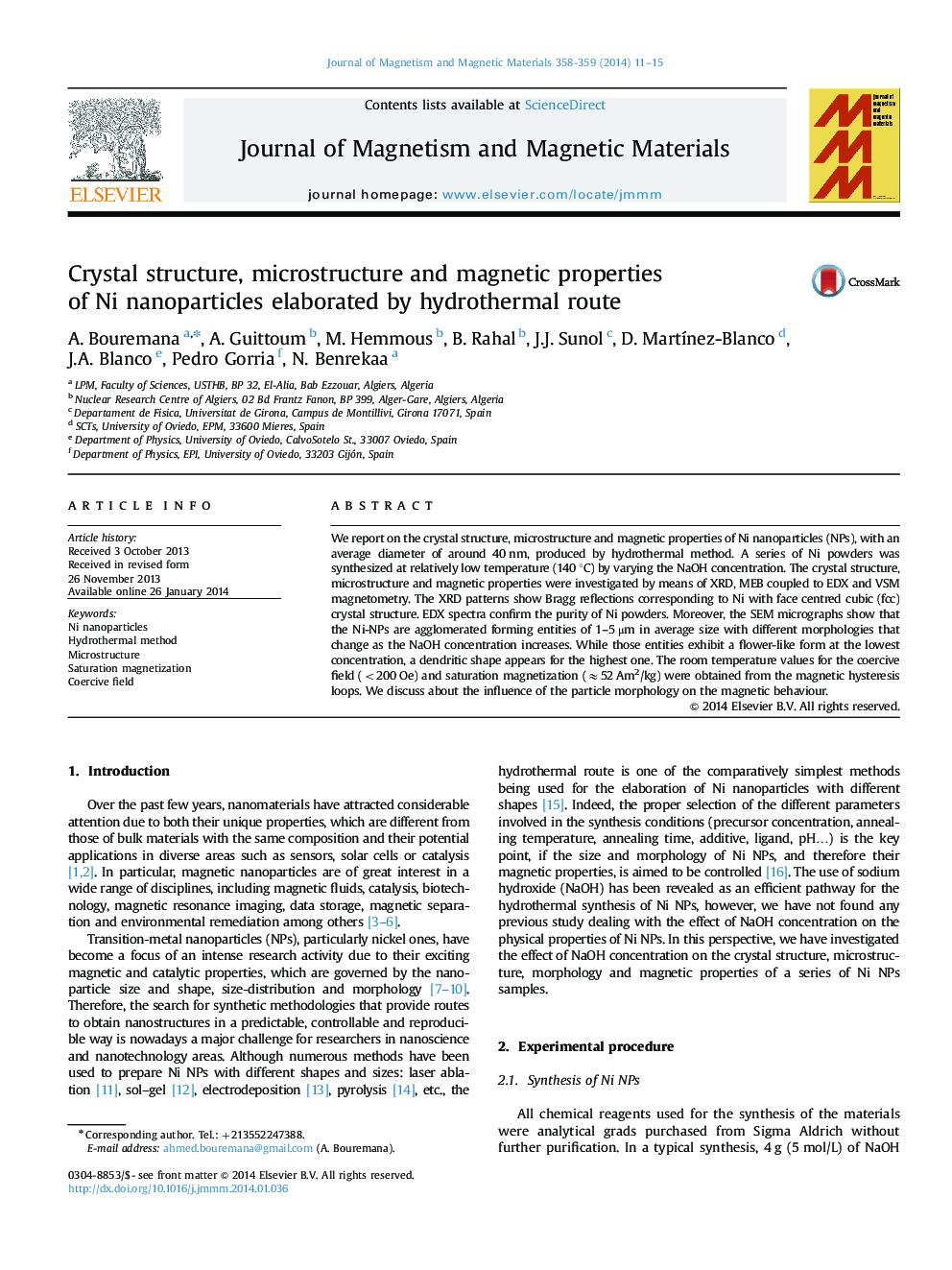| Article ID | Journal | Published Year | Pages | File Type |
|---|---|---|---|---|
| 1799843 | Journal of Magnetism and Magnetic Materials | 2014 | 5 Pages |
•High purity Ni nanoparticles have been elaborated by hydrothermal method under the presence of sodium hydroxide with different concentrations.•The variation of the NaOH concentration seems to be irrelevant for the NP size, but plays an important role in the morphology.•The shape of Ni nanoparticles changes from spherical cores to flower-like entities and then to dendritic ones as the NaOH concentration increases.•The coercive field depends on the shape of nanoparticles.
We report on the crystal structure, microstructure and magnetic properties of Ni nanoparticles (NPs), with an average diameter of around 40 nm, produced by hydrothermal method. A series of Ni powders was synthesized at relatively low temperature (140 °C) by varying the NaOH concentration. The crystal structure, microstructure and magnetic properties were investigated by means of XRD, MEB coupled to EDX and VSM magnetometry. The XRD patterns show Bragg reflections corresponding to Ni with face centred cubic (fcc) crystal structure. EDX spectra confirm the purity of Ni powders. Moreover, the SEM micrographs show that the Ni-NPs are agglomerated forming entities of 1–5 μm in average size with different morphologies that change as the NaOH concentration increases. While those entities exhibit a flower-like form at the lowest concentration, a dendritic shape appears for the highest one. The room temperature values for the coercive field (<200 Oe) and saturation magnetization (≈52 Am2/kg) were obtained from the magnetic hysteresis loops. We discuss about the influence of the particle morphology on the magnetic behaviour.
